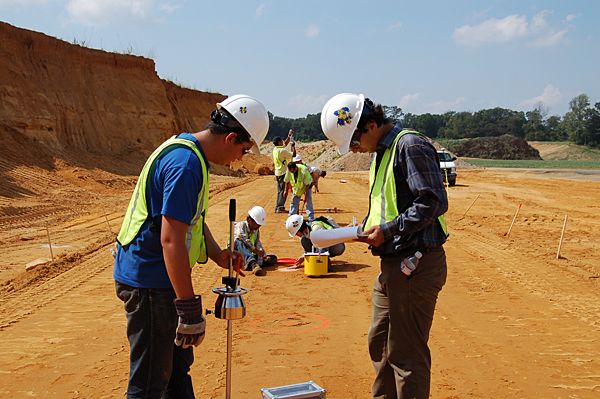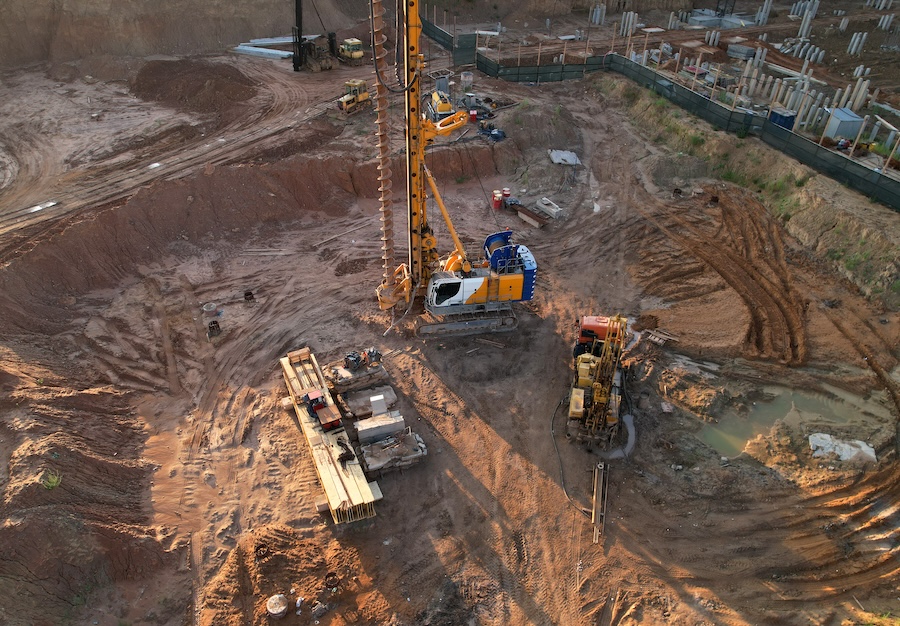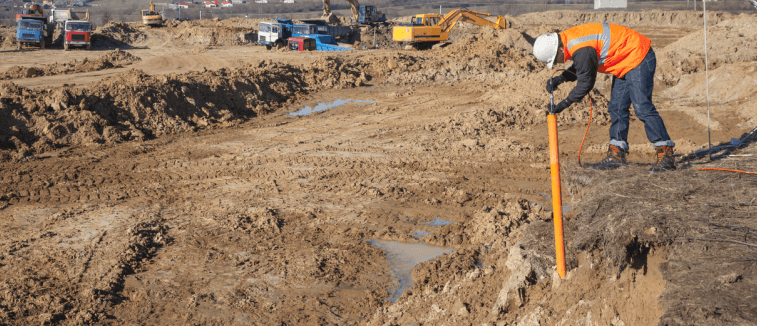Why Employing a Geo Tech Engineer is Critical for Complex Construction Projects
Wiki Article
The Interdisciplinary Approaches in the Geotechnical Industry: Linking the Gap In Between Design, Geology, and Environmental Science for Optimum Task Outcomes
The integration of design, geology, and ecological scientific research within the geotechnical market is not simply beneficial; it is essential for achieving optimum task outcomes. This interdisciplinary cooperation cultivates a thorough understanding of complex website conditions, allowing for cutting-edge solutions to arise. By taking a look at key roles and successful case studies, we can discover the vibrant interaction that drives project success. Obstacles stay in effectively taking care of these multidisciplinary efforts, increasing concerns concerning potential developments and future fads. What approaches might arise to facilitate this essential partnership and improve the effectiveness of geotechnical practices?Importance of Interdisciplinary Partnership
The value of interdisciplinary partnership in the geotechnical industry can not be overstated. Efficient geotechnical jobs need the assimilation of diverse experience from various fields, consisting of engineering, geology, and ecological scientific research. This collaboration makes certain that all aspects of a job are thought about, causing comprehensive remedies that resolve intricate challenges.When functioning in seclusion,Interdisciplinary partnership promotes advancement by allowing professionals to share understandings and techniques that might not be noticeable. By leveraging the toughness of several disciplines, groups can determine prospective risks, maximize design processes, and improve the sustainability of geotechnical jobs. Such cooperation advertises a holistic understanding of site-specific conditions, which is critical for accurate evaluation and decision-making.
The complexity of geotechnical tasks demands a worked with technique to analytic. When engineers, geologists, and ecological researchers interact, they can develop a natural method that lines up technical demands with environmental considerations and regulatory compliance. This synergy not only enhances task end results but likewise adds to the long-term strength of framework. Eventually, interdisciplinary cooperation is important for progressing best practices and accomplishing excellence in the geotechnical industry.
Secret Functions of Each Technique
Collaboration amongst numerous disciplines is not simply beneficial; it is vital for the successful implementation of geotechnical jobs. Each self-control-- engineering, geology, and ecological scientific research-- plays a distinctive yet interconnected function that adds to forecast effectiveness and sustainability.Geotechnical designers are largely in charge of making foundations and guaranteeing structural honesty. They evaluate soil and rock properties to examine load-bearing capabilities, offering important information for safe building techniques. Their knowledge enables the solution of innovative remedies to complex difficulties.

Environmental scientists analyze the prospective effects of construction on ecological communities and water sources. They conduct environmental evaluations and develop mitigation strategies to reduce adverse effects. By incorporating ecological factors to consider, they make sure conformity with laws and promote sustainability throughout the project lifecycle.
Study of Successful Combination
Successful assimilation of geotechnical disciplines can be exemplified with numerous study that highlight the effectiveness of team effort in dealing with complicated design obstacles. One notable instance is the building of the Hong Kong-- Zhuhai-- Macau Bridge, where a collaborative technique including geotechnical design, geology, and environmental scientific research was vital. Rock hounds and designers worked in unison to examine the seabed conditions and maximize the structure layout, ensuring security and lessening environmental impact.Another impactful situation is the enhancement of slope security in the San Francisco Bay Location, where an interdisciplinary group combined geotechnical analysis with ecological analyses. By integrating geological studies and hydrological research studies, the team properly identified prospective landslide threats and applied efficient reduction steps, improving safety and sustainability.
Moreover, the redevelopment of geotechnical engineers Brownfield sites frequently requires a multidisciplinary strategy. In one situation in Chicago, partnership among geotechnical engineers, ecological scientists, and urban coordinators caused the successful removal of infected dirt, allowing for the risk-free makeover of the site right into an area park. These situation studies show that interdisciplinary cooperation not only addresses technological challenges however likewise cultivates ingenious remedies that benefit both neighborhoods and tasks.
Difficulties in Multidisciplinary Projects

Additionally, working with timetables and process among various teams can be problematic, specifically when each technique has one-of-a-kind project milestones and deliverables. This misalignment can lead to hold-ups and enhanced costs. The challenge of resource appropriation additionally looms huge; making certain that customized know-how is offered at critical times calls for careful preparation and insight.
Finally, governing compliance presents an additional substantial obstacle. Each discipline might encounter different governing frameworks, and lining up these needs to meet project objectives can be time-consuming and complicated. Addressing these difficulties demands strong management and reliable communication strategies to promote collaboration and guarantee that multidisciplinary teams function cohesively towards shared goals.
Future Trends in Geotechnical Practices
As the geotechnical industry evolves, arising patterns are reshaping methods to address the obstacles encountered in multidisciplinary jobs - geo tech engineer. One substantial trend is the boosted assimilation of advanced modern technologies, such as man-made intelligence and artificial intelligence, into geotechnical analysis and layout. These innovations enhance anticipating modeling and risk analysis, enabling engineers to make even more informed choices throughout the project lifecycle
Furthermore, the adoption of digital twins and real-time tracking systems is ending up being a lot more widespread. These devices help with recurring assessment of soil conditions and structural performance, enabling timely interventions when problems develop.
Verdict
In verdict, the assimilation of design, geology, and ecological scientific research is crucial for accomplishing optimum outcomes in the geotechnical industry. Successful case research studies show the benefits of this technique, while acknowledging the obstacles encountered in multidisciplinary tasks.The assimilation of design, geology, and ecological scientific research within the geotechnical sector is not simply useful; it is important for accomplishing ideal job end results. Efficient geotechnical jobs need the integration of varied know-how from various areas, including engineering, geology, and ecological scientific research.Browsing the intricacies of multidisciplinary jobs in the geotechnical sector presents a number of substantial challenges.As the geotechnical sector evolves, emerging fads are reshaping methods to address the difficulties faced in multidisciplinary jobs. Geotechnical designers are increasingly teaming up with environmental researchers to ensure that tasks align with sustainability objectives and conform with governing requirements.
Report this wiki page